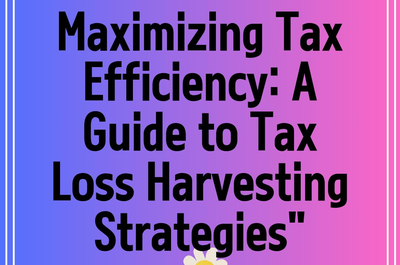
The Mosaic Company (NYSE
), a leading producer of potash and phosphate fertilizers, recently announced that it is facing significant operational challenges in its potash and phosphate production. These challenges, though temporary, are impacting both the company’s output and market sentiment. Let’s explore the reasons behind these disruptions, the broader economic context, and what this means for Mosaic and the agricultural industry.
1. The Nature of the Operational Challenges
Mosaic’s announcement cited several key reasons for the operational setbacks in its potash and phosphate production. Specifically, the company has been dealing with mechanical issues and weather-related disruptions, which have slowed down operations. For example, unplanned maintenance in some of its production facilities has led to reduced output, while severe weather conditions—particularly in the U.S. Gulf Coast region where Mosaic has key operations—have also hampered the smooth running of its plants.
To give you an idea of the scale, Mosaic had projected potash production at 10.8 million metric tons in 2024, but due to these challenges, output is expected to fall by 5-10%. Similarly, phosphate production, which was initially forecasted at around 8.5 million metric tons, is now being revised downward as well, though the company has not yet specified by how much. These reductions may not seem large in percentage terms, but given the global demand for fertilizers, even slight disruptions can have noticeable impacts on both Mosaic’s financial performance and the broader fertilizer market.
2. Broader Economic Impact on the Fertilizer Market
To understand the full significance of these operational challenges, we need to look at the larger global economic context. Fertilizer, particularly potash and phosphate, plays a critical role in global agriculture. Farmers rely on these nutrients to enhance soil fertility and improve crop yields. When there are disruptions in production—whether due to supply chain issues or operational setbacks—the effects ripple across the agricultural industry.
For instance, in 2022, global potash prices soared due to supply chain issues stemming from geopolitical tensions in Russia and Belarus, two of the largest potash exporters. Mosaic, as one of the world’s largest potash producers, benefited from these higher prices, with its stock price climbing by 25% in 2022. However, the operational challenges Mosaic is now facing could cause its market share to weaken, especially as demand for fertilizers is expected to remain high into 2025, driven by the need for higher agricultural productivity to feed a growing global population.
Similarly, phosphate production has faced global challenges, with key producers like China limiting exports to prioritize domestic needs. Mosaic’s difficulties in this space could further tighten supply, potentially driving up global phosphate prices, which had already risen by 20% in the past year due to rising input costs like sulfur and ammonia.
3. The Impact on Mosaic’s Stock and Financial Outlook
So, what does this mean for Mosaic’s stock and its financial outlook? When a company as large as Mosaic announces operational challenges, it can create uncertainty in the market. On the day of the announcement, Mosaic’s stock fell by 3%, reflecting investor concerns about the company’s ability to meet its production targets.
However, Mosaic is a well-established company with significant financial reserves. In its latest earnings report, Mosaic posted $2.8 billion in revenue for Q3 2024, with a gross profit margin of around 25%. While the operational setbacks will likely dent Q4 revenue, analysts still project that Mosaic will end the year with $11 billion in total revenue. The company has also been focusing on cost-cutting measures and efficiency improvements, which should help mitigate some of the financial impact from the reduced output.
Mosaic has been aggressive in returning value to shareholders, with $1 billion in share buybacks over the past 12 months, and a consistent dividend yield of around 1.5%. These shareholder-focused strategies are likely to keep the stock attractive for long-term investors, even in the face of temporary operational hurdles.
4. The Importance of Potash and Phosphate in Agriculture
To truly understand why operational challenges in Mosaic’s potash and phosphate operations matter, we need to examine the role these fertilizers play in agriculture. Potash is critical for regulating water flow in plants and improving root strength, while phosphate is essential for energy transfer and growth. Both are key to ensuring high crop yields, especially for staple crops like wheat, corn, and soybeans.
Globally, the demand for fertilizers is projected to grow by 4% annually over the next five years, driven by increasing population and the need for food security. Mosaic’s operational issues, if prolonged, could lead to supply shortages, which would push up global fertilizer prices and potentially affect food production costs. This could especially impact developing countries, where the cost of fertilizers already makes up a significant portion of farmers’ operating expenses.
5. The Road Ahead: Challenges and Opportunities
Mosaic is working to address these operational challenges and is expected to resolve most of the mechanical and weather-related issues by early 2025. The company’s management has been transparent about its efforts to bring production back to full capacity, and analysts are cautiously optimistic that these disruptions will not have a long-lasting effect on Mosaic’s market position.
Looking forward, Mosaic has several opportunities to recover from these short-term setbacks. The global demand for fertilizers remains robust, and Mosaic’s strategic investments in sustainability and digital agriculture solutions position it well for long-term growth. For example, the company has been exploring green ammonia as part of its phosphate production process, a move that could lower production costs and improve environmental sustainability.
Conclusion: Mosaic Faces Short-Term Challenges, But Long-Term Strength Remains
In conclusion, while The Mosaic Company is currently facing operational challenges in its potash and phosphate production, these are expected to be short-term issues. The broader economic environment suggests strong demand for fertilizers, and Mosaic’s financial health and strategic initiatives should help the company weather these disruptions. Investors should keep an eye on the company’s progress in resolving these operational hurdles but can remain confident in Mosaic’s long-term growth prospects.


